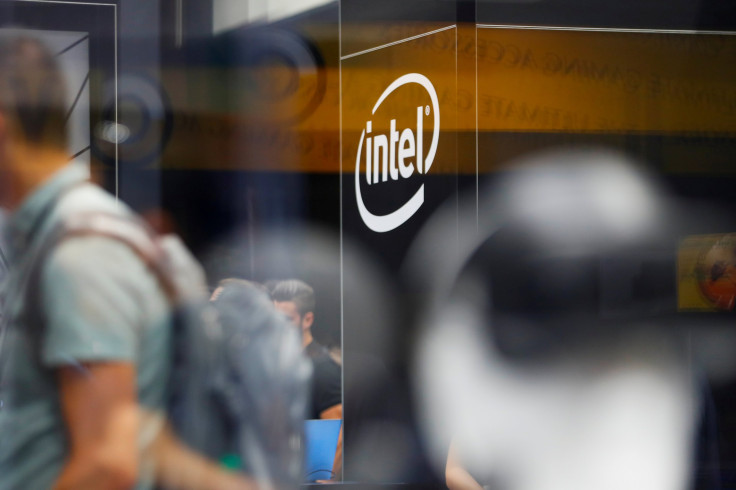Is Intel Surrendering The Desktop Market To AMD?
Over the past year, Intel's (NASDAQ:INTC) ongoing shortage of 14nm chips allowed AMD (NASDAQ:AMD) to gain significant ground in the PC and data center markets. Intel is struggling to resolve those issues, but a recent rumor suggested that it could practically surrender the desktop market to AMD to get back on track.
Intel recently launched its first 10nm Ice Lake chips for laptops, but it didn't disclose any plans for 10nm desktop chips. German site Hardwareluxx claims that Intel could skip the entire 10nm process for desktop CPUs and jump straight to 7nm desktop CPUs by 2022.
That decision would give AMD a massive advantage in the desktop space, since it already launched its first 7nm CPUs for desktops and servers this summer. The laptop versions are scheduled to arrive in the beginning of 2020.
Intel quickly denied the rumor, claiming that it was making "great progress on 10nm," and that its "current roadmap of 10nm products includes desktop" CPUs. However, Digital Trends noted that Intel's statement contradicted the chipmaker's leaked roadmap, which shows its 14nm desktop chips being extended into 2021 without any 10nm chips.
It's unclear which side is telling the truth, but skipping from 14nm to 7nm in the desktop market might make strategic sense for Intel. Let's discuss those reasons and see if Intel could actually make that sacrifice to keep pace with AMD.

What happened to Intel?
In the 1960s, Intel co-founder Gordon Moore predicted that the number of transistors in the same area of silicon would double every year. That prediction, known as "Moore's Law", held true for about a decade before being revised into a two-year cycle in 1975. That cycle was the basis of Intel's two-year "tick-tock" schedule.
In a tick, Intel improved the manufacturing process on a smaller die size. In a tock, the die size remains the same but the CPU is improved. This two-year cycle held up until the beginning of this decade, when the gap between ticks widened due to the difficulty of manufacturing smaller chips.
Intel's transition from 14nm to 10nm was especially difficult, and resulted in the current shortage of the 14nm chips used in many mid-range PCs. When Intel ran out of CPUs, frustrated OEMs turned to AMD instead.
AMD didn't suffer a chip shortage because it outsources the production of its CPUs to dedicated foundries like TSMC (NYSE:TSM) and GlobalFoundries. Intel manufactures its chips at its own foundry, which now trails behind TSMC in the manufacturing process.
Therefore, Intel's capacity to produce new 10nm chips likely remains throttled by its shortage in 14nm chips. Intel claims that it will resolve its 14nm shortage this year, but DigiTimes recently claimed that the pain could last until next year.
Would Intel really skip the desktop market?
That's why Intel's leaked plans suggest that it will limit its new 10nm chips to laptops and servers instead of desktops, which it plans to serve with upgraded 14nm processors. If that's true, Intel believes that its 14nm CPUs can offer comparable performance on desktops to that of AMD's 7nm CPUs until 2022.
This suggests that Intel might run its older chip architecture on higher voltages to stay competitive, which is basically what AMD did in previous years whenever Intel launched a more advanced architecture. Intel might take that risk because most of the growth in the PC market comes from laptops instead of desktops.
IDC estimates that desktops and workstations will only account for 21.4% of the PC market in 2023, down from 22.7% this year. The convertible, 2-in-1, and ultraslim notebook markets are all expected to grow during that period.
AMD's share of the desktop CPU market grew from 11.1% to 17.1% between the second quarters of 2017 and 2019, according to Mercury Research. That growth is significant, but it doesn't indicate that AMD will steal Intel's crown anytime soon. Therefore, Intel might be willing to let that core business tread water until 2022 before it strikes back at AMD.
What's at stake for Intel?
Intel's desktop revenue fell 3.5% annually to $5.65 billion, or 17% of its top line, in the first half of 2019. However, its notebook revenue rose 3% to $10.06 billion and accounted for 31% of its top line.
Those figures indicate that it's conceivable for Intel to suspend the "tick" in its desktop CPUs until 2022 and use several aggressive "tocks" to hold AMD at bay. It also explains why Intel is prioritizing the launch of 10nm CPUs for notebooks instead of other platforms.
Investors should always take these rumors and rebuttals with a grain of salt. However, this clash suggests that Intel will keep struggling to get its act together as AMD cruises ahead.
Leo Sun has no position in any of the stocks mentioned. The Motley Fool owns shares of Intel and has the following options: short January 2020 $50 calls on Intel. The Motley Fool recommends Taiwan Semiconductor Manufacturing. The Motley Fool has a disclosure policy.
This article originally appeared in The Motley Fool.





















